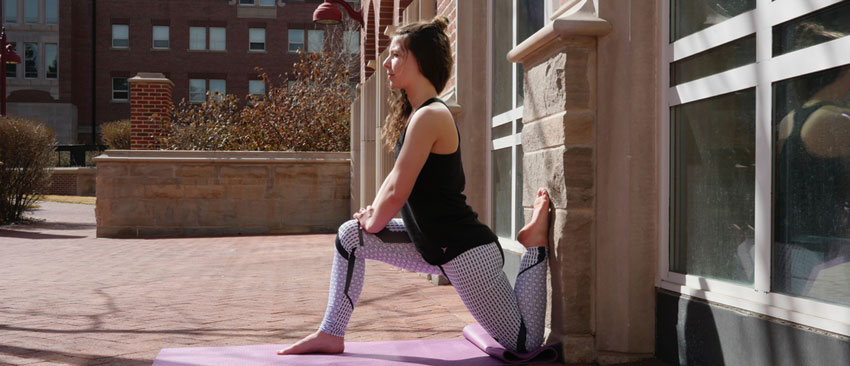Prioritizing Mobility: A Few Minutes a Day Keeps the Doctor Away

There’s no denying that exercise is good for our bodies; in fact, most of us would freely admit that our body craves it! As we first begin exercising, many of us might focus on our aesthetic goals like fitting into an old pair of jeans, hitting a certain number on the scale, or getting a six-pack before summer, but as we get used to our normal exercise routine, it’s not uncommon to gravitate towards more health or performance-based goals. Something like lowering blood pressure, running a 5k, or adding weight to out lifts at the gym. As we age, however, some of these benchmarks may end up taking a backseat to another priority—joint mobility.
Mobility is something that we were all born with, yet, over time, we somehow manage to lose most of our body’s natural ability to move. Just think about it, did you grunt, huff, or puff as you sat down on the ground as a kid? Prioritizing mobility in our training program as we get older is essential to ensuring our body’s overall health. Without it, even simple tasks can seem almost impossible. Understanding what causes these issues and how to address the problem, can help you stay in tip-top shape!
The Problem
If you spend a few minutes with an active child, you will see how freely they are able to move. Young kids will often hang out in the bottom of a squat with perfect ankle, knee, and hip range of motion. As soon as they are able, you will also see them swinging from the monkey bars on the playground, demonstrating full flexion in their shoulders and full thoracic extension in their upper back. Limited mobility begins to develop when young adults start to spend more time being sedentary and less time moving around and playing. As we get older, this issue only seems to grow in magnitude. Between craning our necks at computer screens, rounding our backs while texting, or shortening our hip flexors by sitting at a desk all day, we begin to develop mobility issues that are not seen at younger ages.
Use this hip flexor stretch, and more from our Stretch Courses, to combat age and desk associated hip tension.
While it is tempting to point a finger at school environments, office jobs, and the ever-present onslaught of digital technology, the real issue is a lack of frequent movement. Many of us will go days or even weeks without reaching our shoulders overhead or behind our backs. Then, when we do, we will inevitably end up feeling tightness or pain. Similarly, when we only condition our hips to sit or stand, we begin to develop issues when we try to squat or sit on the floor with our legs crossed. In order to make positive changes to our mobility, we need to frequently move our bodies through varied, full ranges of motion.
So, What Can You Do?
Regaining the mobility that you used to have might seem like a lot of work, but the truth is, it’s not! Making small additions to your daily routine will help you to feel fresh and rejuvenated. Doing some sort of daily limbering practice is a great way to increase your mobility and maintain your active lifestyle. Doing some sort of dynamic warm-up each morning, or simply limbering up on your lunch break are great ways to incorporate this into your daily routine. Whatever you decide works best for you, focus on moving each joint through its full range of motion. While this might be difficult at first, as you practice you will eventually be able to move each joint with ease and control.

Integrating mobility drills into your workouts will also make a world of difference. Doing a mobility exercise between each set of strength training will help you to keep your joints loose while making your body strong. We all have room to improve both our strength and our mobility. Adopting the practice of integrating mobility drills into your workouts will help your body to adapt to a more fluid lifestyle while still allowing you to increase your strength. This will also make your training time more efficient as you won’t just be loosening up, but you’ll also be resting and getting ready to “go hard” during your next set. In addition, having one or more dedicated stretch sessions each week will help improve your mobility, flexibility, and recovery. The benefits are even greater if you are able to stretch directly after a hard workout. Frequent stretching will help you to balance out any tight muscles and joint you might have as a result of your strength training. Teaching your body that it is OK to be mobile, as well as strong, will help you to decrease your chances of injury and increase your quality of life.
Just Get Started
Leading sedentary lives without enough movement and play can leave you feeling old and frail. But adding small limbering sessions and mobility drills into your daily routine will help you to feel looser, pain-free joints as you frequently them through their full ranges of motion. Dedicating time to longer, more intense stretch sessions each week will also help you to increase your flexibility and break through plateaus in your training. Making these small changes and additions to your life will bring about big changes. All you have to do is get started and you’ll soon start to feel to benefits of your mobility work. Setting aside a few minutes a day can save you years of painfully tight joints. Don’t wait! Start to improve your joint health and feel the relief you’ve been looking for using the GymnasticBodies online courses!

